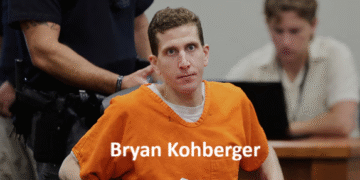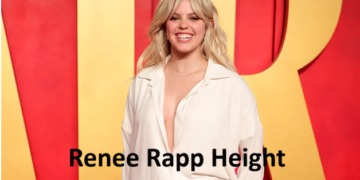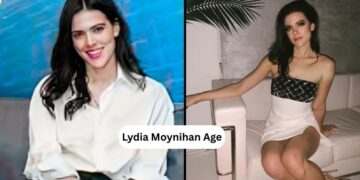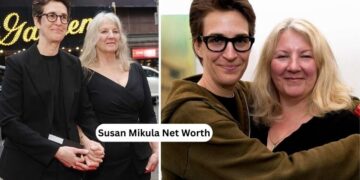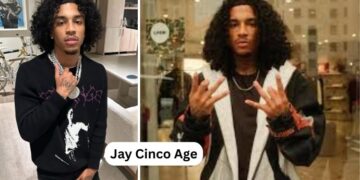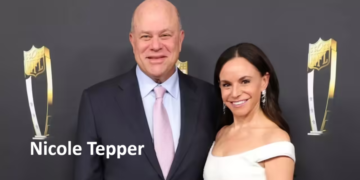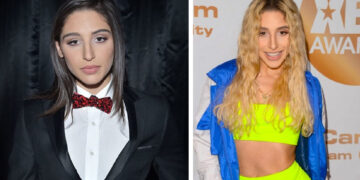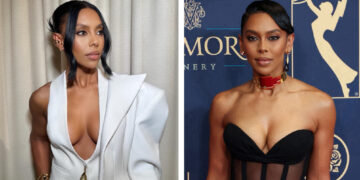In an industry often criticized for its lack of diversity, Anok Yai emerged as a transformative force who didn’t just break barriers—she shattered them. Her meteoric rise from college student to global fashion icon represents more than personal success; it symbolizes a pivotal shift in the fashion landscape that continues to reshape beauty standards worldwide. Yai’s journey from viral social media discovery to becoming the first Black model to open a Prada show since 1997 marks a watershed moment in fashion history that deserves closer examination.
The Unexpected Discovery: From College Campus to Viral Sensation
Anok Yai’s journey into fashion’s elite circles began unexpectedly during Howard University’s 2017 homecoming celebrations. The then 19-year-old biochemistry student at Plymouth State University was visiting friends when photographer Steven Hall spotted her striking features. The portrait he captured and shared on Instagram went viral almost instantly, garnering over 20,000 likes and catching the attention of modeling agencies worldwide.
“I didn’t think anything would come out of it,” Yai later revealed in interviews. Her hesitation was understandable—the fashion industry had long maintained narrow beauty standards that excluded many women who looked like her. Yet the overwhelming public response to her image suggested the world was ready for change, craving representation that the industry had denied for decades.
Within days, Yai received offers from over a dozen modeling agencies, ultimately signing with Next Models. This digital discovery story has since become legendary in fashion circles, representing how social media has democratized entry into an industry once guarded by gatekeepers with limited vision.
Making History at Prada: A Watershed Moment

Anok Yai’s most definitive industry-shaking moment came in February 2018, merely months after her discovery. Selected to open Prada’s Fall/Winter 2018 show during Milan Fashion Week, Yai became the first Black model to open for the prestigious Italian fashion house since Naomi Campbell in 1997—a staggering 21-year gap that highlighted fashion’s persistent diversity problems.
The significance of this moment cannot be overstated. Prada, as one of fashion’s most influential luxury brands, has tremendous power in defining beauty standards. By placing Yai in the coveted opening spot—traditionally reserved for the designer’s strongest statement—Miuccia Prada signaled a shift in industry priorities that reverberated throughout the fashion world.
Fashion historian and critic Valerie Steele noted: “Opening a major show like Prada isn’t just an honor for a model; it’s a statement about where fashion is headed.” Yai’s Prada moment wasn’t merely personal triumph but became a cultural reference point that accelerated conversations about representation throughout luxury fashion.
Redefining Beauty Standards With Undeniable Presence
What makes Anok Yai’s impact particularly significant is how she has challenged conventional beauty standards without compromise. Standing at 5’11” with striking deep skin tone and distinctive facial features, Yai represents a beauty that high fashion had largely overlooked despite its global audience.
“There are so many beautiful Black women who have been told they aren’t enough,” Yai stated in a 2019 interview. “My goal has been to show that our beauty deserves to be celebrated, not as an exception but as part of what makes fashion interesting.”
Her success has coincided with—and arguably accelerated—the industry’s belated acknowledgment that beauty comes in all skin tones. Makeup brands expanded shade ranges, photographers adjusted lighting techniques historically biased toward lighter skin, and magazines began featuring more diverse cover models. While these changes cannot be attributed to Yai alone, her undeniable success provided a compelling business case for inclusion that industry executives could no longer ignore.
Beyond Modeling: Advocacy and Cultural Impact

Yai has leveraged her platform to advocate for meaningful change beyond mere representation. She has been outspoken about the ongoing challenges models of color face, from limited opportunities to behind-the-scenes discrimination in casting, makeup, and hair styling.
“Being the ‘first’ or the ‘only’ comes with responsibility,” she shared at a fashion diversity panel. “It’s not enough to just be present—I want to ensure the door stays open for those coming after me.”
This advocacy extends to her careful selection of projects and collaborations. By working with brands committed to authentic diversity rather than tokenism, Yai has helped establish a new standard for how fashion companies approach inclusion. Her partnerships with Estée Lauder, Fenty Beauty, and other forward-thinking brands demonstrate how representation can be both commercially successful and culturally meaningful.
The Anok Effect: Transforming Industry Practices
The “Anok Effect,” as some industry insiders have dubbed it, extends beyond visibility to tangible changes in how fashion operates. Since her emergence, casting directors have broadened their searches, agencies have invested in scouting diverse talent, and designers have reconsidered who they envision wearing their creations.
Models from South Sudan and other African nations have seen particularly increased opportunities following Yai’s breakthrough. This ripple effect demonstrates how a single success story can create pathways for countless others when that success challenges entrenched systems.
Fashion photographer Tyler Mitchell, known for his groundbreaking work, observed: “What Anok accomplished was forcing people to question why they hadn’t been seeing this beauty all along. Once that question emerges, the old excuses fall apart.”
Legacy in Progress: Fashion’s Continuing Evolution

While significant progress has been made, Yai’s journey continues to highlight how much work remains. The fashion industry still struggles with tokenism, behind-the-scenes diversity, and authentic inclusion across all aspects of the business.
As she continues building her career—now including ventures into design collaborations and potential film projects—Yai remains conscious of her position as both symbol and change agent. “This was never just about me having a successful modeling career,” she stated recently. “It’s about permanently changing an industry that influences how people around the world see themselves.”
Fashion forecasters now routinely cite Yai’s breakthrough as the beginning of a new era in fashion—one where diversity isn’t treated as a trend but as an essential element of the industry’s relevance and future. Her revolution continues with each runway appearance, campaign, and thoughtful interview, ensuring that fashion’s definition of beauty never again becomes so narrowly defined.
(FAQs) About Anok Yai
Q1 How was Anok Yai discovered?
Anok Yai was discovered in October 2017 when photographer Steven Hall took her photo at Howard University’s homecoming celebration. The image went viral on Instagram, receiving over 20,000 likes and attracting attention from modeling agencies worldwide. Within days, she had received offers from more than a dozen agencies and eventually signed with Next Models.
Q2 What makes Anok Yai historically significant in the fashion industry?
Yai made history as the first Black model to open a Prada runway show since Naomi Campbell in 1997—a 21-year gap. This achievement was particularly significant because opening prestigious shows like Prada’s indicates a model’s status and influences industry standards. Her selection represented a pivotal shift in how major fashion houses approach diversity and representation.
Q3 What is Anok Yai’s background before modeling?
Before her modeling career, Anok Yai was a biochemistry student at Plymouth State University in New Hampshire. Born in Egypt to South Sudanese parents, she later moved to the United States as a refugee, growing up in Manchester, New Hampshire. Her academic interests highlight the multidimensional talents she brought to the fashion world.
Q4 How has Anok Yai influenced diversity in fashion beyond her own career?
Beyond her personal success, Yai has been credited with accelerating diversity initiatives throughout the fashion industry. Her breakthrough coincided with increased representation in runway shows, advertising campaigns, and editorial features. Additionally, makeup brands expanded their shade ranges, and more models with similar features and skin tones began receiving opportunities. She has also used her platform to speak about industry issues and advocate for systemic changes.
Q5 What major brands has Anok Yai worked with?
Since her breakthrough, Anok Yai has worked with numerous prestigious fashion and beauty brands. Her portfolio includes campaigns for Prada, Fendi, Versace, Estée Lauder, Nike, and Fenty Beauty, among others. She has appeared on multiple Vogue covers worldwide and continues to be featured in editorials for major fashion publications, cementing her status as one of the industry’s most in-demand models.
For More Information Visit Bratish Magazine





